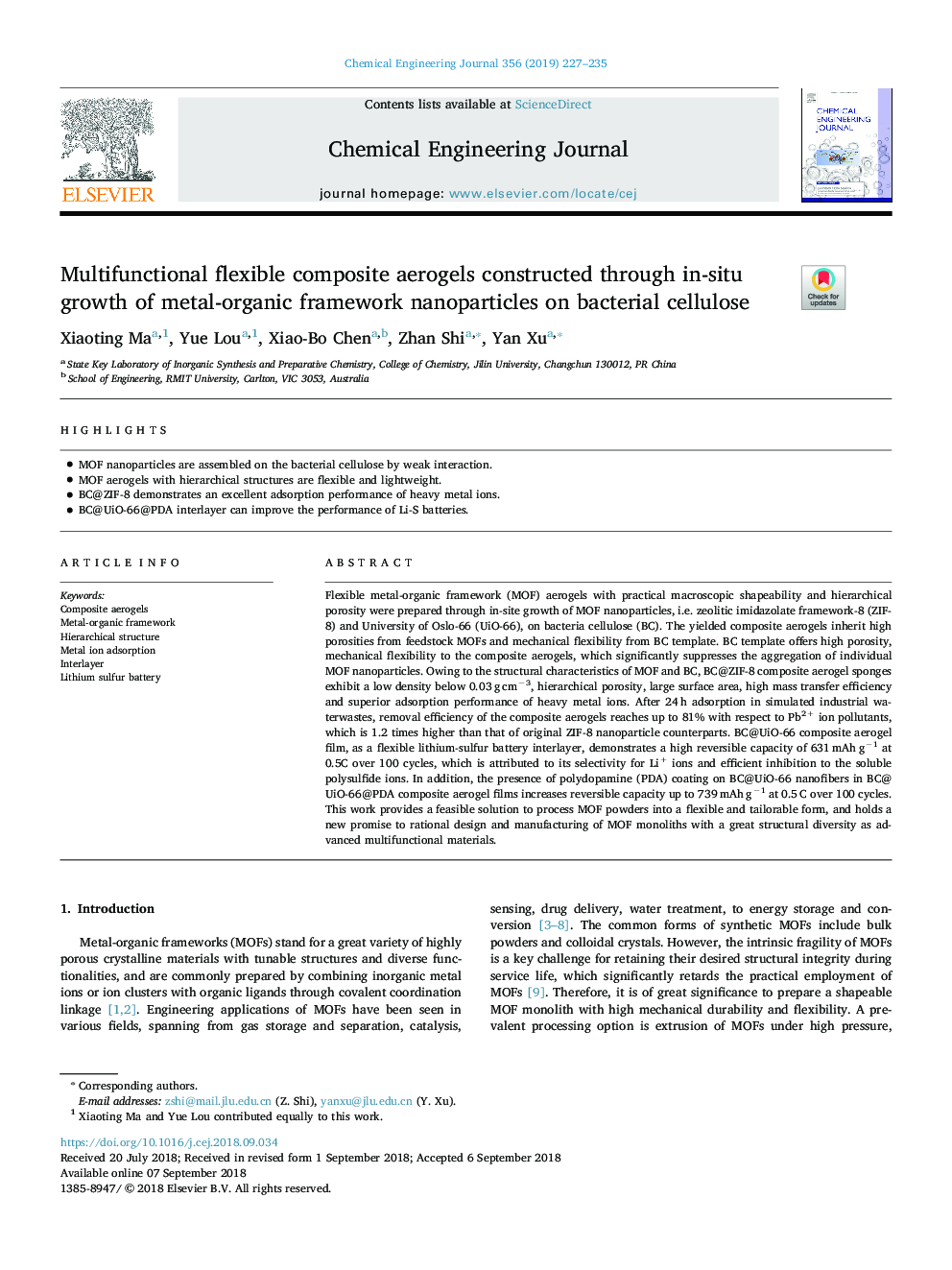| Article ID | Journal | Published Year | Pages | File Type |
|---|---|---|---|---|
| 10145301 | Chemical Engineering Journal | 2019 | 9 Pages |
Abstract
Flexible metal-organic framework (MOF) aerogels with practical macroscopic shapeability and hierarchical porosity were prepared through in-site growth of MOF nanoparticles, i.e. zeolitic imidazolate framework-8 (ZIF-8) and University of Oslo-66 (UiO-66), on bacteria cellulose (BC). The yielded composite aerogels inherit high porosities from feedstock MOFs and mechanical flexibility from BC template. BC template offers high porosity, mechanical flexibility to the composite aerogels, which significantly suppresses the aggregation of individual MOF nanoparticles. Owing to the structural characteristics of MOF and BC, BC@ZIF-8 composite aerogel sponges exhibit a low density below 0.03â¯gâ¯cmâ3, hierarchical porosity, large surface area, high mass transfer efficiency and superior adsorption performance of heavy metal ions. After 24â¯h adsorption in simulated industrial waterwastes, removal efficiency of the composite aerogels reaches up to 81% with respect to Pb2+ ion pollutants, which is 1.2 times higher than that of original ZIF-8 nanoparticle counterparts. BC@UiO-66 composite aerogel film, as a flexible lithium-sulfur battery interlayer, demonstrates a high reversible capacity of 631â¯mAhâ¯gâ1 at 0.5C over 100 cycles, which is attributed to its selectivity for Li+ ions and efficient inhibition to the soluble polysulfide ions. In addition, the presence of polydopamine (PDA) coating on BC@UiO-66 nanofibers in BC@UiO-66@PDA composite aerogel films increases reversible capacity up to 739â¯mAhâ¯gâ1 at 0.5â¯C over 100 cycles. This work provides a feasible solution to process MOF powders into a flexible and tailorable form, and holds a new promise to rational design and manufacturing of MOF monoliths with a great structural diversity as advanced multifunctional materials.
Keywords
Related Topics
Physical Sciences and Engineering
Chemical Engineering
Chemical Engineering (General)
Authors
Xiaoting Ma, Yue Lou, Xiao-Bo Chen, Zhan Shi, Yan Xu,
